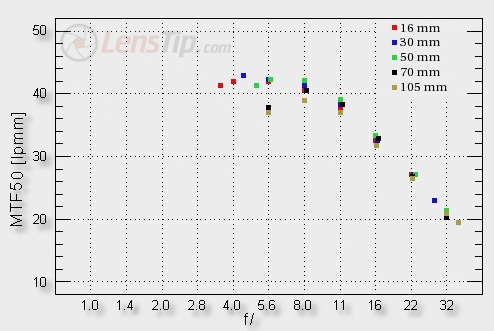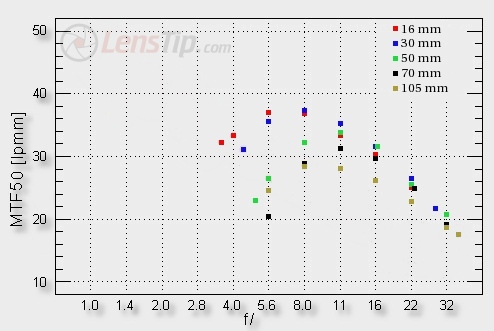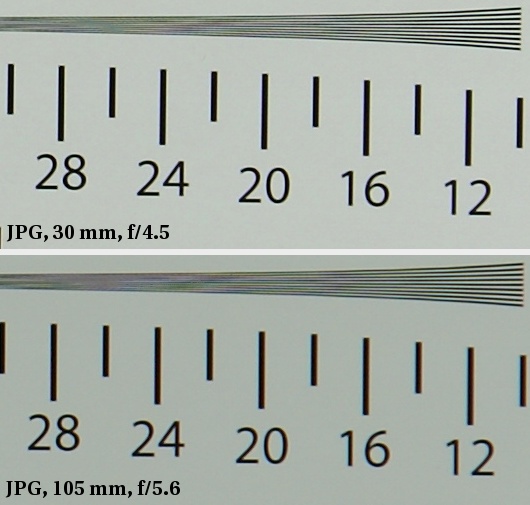Sony DT 16-105 mm f/3.5-5.6
4. Image resolution

At first glance you can notice two things. Firstly, such a big zoom, starting from a wide angle has no problems when it comes to exceeding the high level of 40 lpmm and at many apertures you should add; what’s more interesting, the maximum aperture performance in many cases is only slightly worse than the highest results. A performance really worth praise.
Please Support UsIf you enjoy our reviews and articles, and you want us to continue our work please, support our website by donating through PayPal. The funds are going to be used for paying our editorial team, renting servers, and equipping our testing studio; only that way we will be able to continue providing you interesting content for free. |
- - - - - - - - - - - - - - - - - - - - - - - - - - - - - - - - - - - - - - - - - - - - - - - -
The tested lens can be an example worth following in the 16-50 mm range. Some symptoms of a slight crisis can be noticed at 70 mm, where the maximum relative aperture results, although still good, differ from the maximum achievements a bit. The crisis gets worse at 105 mm where the lens, even at the sharpest aperture, never reaches the level of 40 lpmm.
This little crisis distinguishes the 16-105 mm from the Zeiss. The latter was perhaps also a bit worse at maximum focal length 80 mm but its differences between particular focal lengths were slightly smaller. One small point for the Zeiss in this category then.
Now let’s look at the frame borders performance.

It’s good to remind how the Zeiss fared here. At 16 mm the result was very good at all apertures; at 30 mm – simply excellent; at 50 mm very good once again (perhaps apart from the maximum aperture itself) and at 80 mm the performance decreased to the lowest level which, nevertheless, could still be described as good (noticeably exceeding the level of 30 lpmm and in the whole range of useful apertures).
The DT 16-105 mm fares definitely worse here and loses to the Zeiss significantly in this part. A very good performance can be noticed only at 16-30 mm focal lengths. Considerable worsening of results, especially by f/5.0-5.6 can be seen at 50 mm. At 70 mm the situation becomes even more serious - by f/5.6 the lens barely exceeds the level of 30 lpmm and at the sharpest aperture - 30 lpmm That latest level was simply unattainable at any aperture for 105 mm focal length. A big point for Zeiss.
At the end we present out test charts crops obtained for conventionally sharpened JPEG files.







